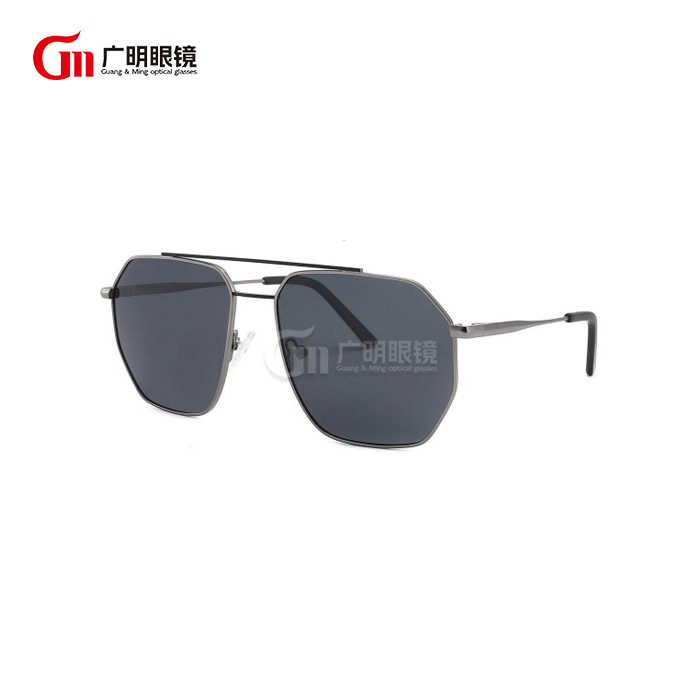Polarized Attachment Sunglasses Durability: Coatings & Construction
The durability of polarized attachment sunglasses is fundamentally determined by the quality of their coatings and construction methods, which directly impact their longevity, performance, and value proposition for consumers. Modern polarized attachment sunglasses incorporate advanced coating technologies and sophisticated construction techniques that ensure these specialized eyewear systems can withstand the rigors of daily use while maintaining their optical performance and aesthetic appeal. The combination of protective coatings, robust attachment mechanisms, and high-quality lens materials creates a durable product that resists environmental damage, mechanical stress, and normal wear patterns that would compromise lesser eyewear systems. Understanding the relationship between coatings, construction quality, and overall durability is essential for consumers seeking long-lasting polarized attachment sunglasses that provide reliable eye protection and consistent performance across various applications and environmental conditions.
What Protective Coatings Make Polarized Attachment Sunglasses Last Longer?
Scratch-Resistant Surface Treatments
Modern polarized attachment sunglasses feature advanced scratch-resistant coatings that significantly extend lens life by protecting against everyday abrasions and minor impacts that would otherwise damage the optical surface. These specialized coatings utilize hardened materials such as silicon dioxide or diamond-like carbon that create an extremely durable protective layer over the polarized lens surface. The scratch-resistant treatments are applied through sophisticated vacuum deposition processes that ensure uniform coverage and optimal adhesion to the underlying lens material. This protective coating is particularly important for polarized attachment sunglasses because their frequent attachment and removal cycles increase the risk of surface damage compared to traditional fixed sunglasses. The scratch-resistant properties help maintain optical clarity and prevent the formation of micro-scratches that could compromise the polarization effectiveness or create visual distortions that affect user comfort and safety.
Anti-Reflective Coating Systems
Anti-reflective coatings play a crucial role in enhancing the durability and performance of polarized attachment sunglasses by reducing internal reflections and improving light transmission efficiency. These multi-layer coatings consist of precisely controlled thin films that create destructive interference patterns for reflected light, resulting in clearer vision and reduced eye strain. The anti-reflective properties are especially beneficial for polarized attachment sunglasses because they eliminate the secondary reflections that can occur between the attachment lens and the underlying prescription glasses. High-quality anti-reflective coatings also include hydrophobic and oleophobic properties that repel water, oils, and other contaminants that could compromise optical performance or require frequent cleaning. The durability of these coating systems is enhanced through ion-assisted deposition techniques that create stronger molecular bonds and improve resistance to environmental factors such as humidity, temperature fluctuations, and UV radiation.
Hydrophobic and Oleophobic Treatments
Advanced hydrophobic and oleophobic treatments significantly improve the durability and maintenance requirements of polarized attachment sunglasses by creating surfaces that naturally repel water, oils, and other contaminants. These specialized coatings utilize fluorinated compounds that create extremely low surface energy, causing liquids to bead up and roll off the lens surface rather than spreading and creating spots or streaks. The hydrophobic properties are particularly valuable for polarized attachment sunglasses used in water sports or humid environments, where water droplets could otherwise impair vision or require frequent cleaning. The oleophobic characteristics help resist fingerprints, cosmetics, and other organic contaminants that commonly accumulate on eyewear surfaces during normal use. These treatments also simplify cleaning procedures and reduce the frequency of maintenance required to keep polarized attachment sunglasses performing at optimal levels, contributing to their overall durability and user satisfaction.
How Does Construction Quality Affect Polarized Attachment Sunglasses Longevity?
Precision-Engineered Attachment Mechanisms
The construction quality of attachment mechanisms is perhaps the most critical factor determining the longevity of polarized attachment sunglasses, as these components experience the highest mechanical stress during normal use. High-quality polarized attachment sunglasses feature precision-engineered attachment systems that utilize materials such as stainless steel, titanium alloys, or high-performance polymers that resist wear, corrosion, and fatigue failure. These attachment mechanisms are designed with careful attention to stress distribution, ensuring that repeated attachment and removal cycles do not create weak points or excessive wear patterns that could lead to premature failure. The precision manufacturing of these components involves tight tolerances and quality control measures that ensure consistent performance and reliable operation over thousands of attachment cycles. Superior construction quality in attachment mechanisms also includes features such as self-lubricating materials, wear-resistant contact surfaces, and ergonomic designs that minimize the force required for operation while maintaining secure connections.
Lens Integration and Bonding Techniques
The construction quality of lens integration and bonding techniques directly impacts the durability and optical performance of polarized attachment sunglasses throughout their service life. Advanced polarized attachment sunglasses utilize sophisticated bonding methods that create permanent, stress-free connections between the polarized film and the lens substrate, preventing delamination or optical distortion that could occur with inferior construction techniques. These bonding processes often involve controlled temperature and pressure cycles that ensure optimal adhesion while maintaining the precise alignment of the polarization filter. High-quality construction also includes stress-relief features and flexible mounting systems that accommodate thermal expansion and contraction without compromising the integrity of the lens assembly. The integration of the polarized film within the lens structure, rather than as a surface application, provides superior protection against environmental damage and mechanical wear that could affect the polarization properties over time.
Frame Compatibility and Material Selection
The construction quality of polarized attachment sunglasses extends to their compatibility with various frame styles and the materials used in their manufacture, both of which significantly impact long-term durability and performance. High-quality polarized attachment sunglasses are engineered to accommodate a wide range of frame geometries and prescription lens configurations without creating stress concentrations or compromising the structural integrity of the base eyewear. This compatibility is achieved through careful material selection and design optimization that ensures the attachment system distributes loads evenly across the frame structure. Premium materials such as memory alloys, advanced polymers, and composite materials are chosen for their specific properties, including fatigue resistance, environmental stability, and compatibility with various frame materials. The construction quality also includes considerations for thermal expansion differences between materials, ensuring that temperature changes do not create stress that could lead to cracking, warping, or other durability issues.

Which Manufacturing Standards Ensure Polarized Attachment Sunglasses Durability?
International Quality Certifications
Manufacturing standards and international quality certifications play a crucial role in ensuring the durability and reliability of polarized attachment sunglasses through rigorous testing protocols and quality control measures. Leading manufacturers adhere to internationally recognized standards such as ISO 12311 for personal eye protection and ANSI Z87.1 for occupational safety eyewear, which establish minimum requirements for optical quality, impact resistance, and durability testing. These certifications require polarized attachment sunglasses to undergo extensive testing procedures that evaluate their performance under various stress conditions, including thermal cycling, humidity exposure, UV radiation, and mechanical impact. The certification process also includes regular audits of manufacturing facilities and quality control systems to ensure consistent adherence to established standards. Compliance with these international standards provides consumers with confidence that their polarized attachment sunglasses meet stringent durability requirements and will perform reliably under normal and extreme use conditions.
Advanced Testing Protocols
Comprehensive testing protocols are essential for ensuring the durability of polarized attachment sunglasses and validating their performance under real-world conditions. Advanced testing procedures include accelerated aging tests that simulate years of environmental exposure in controlled laboratory conditions, allowing manufacturers to identify potential durability issues before products reach consumers. These tests evaluate the effects of UV radiation, temperature cycling, humidity, salt spray, and other environmental factors on the optical performance and structural integrity of polarized attachment sunglasses. Mechanical testing protocols assess the fatigue resistance of attachment mechanisms, the impact resistance of lens materials, and the overall structural durability of the complete eyewear system. Chemical resistance testing ensures that coatings and materials can withstand exposure to common cleaning agents, cosmetics, and other substances that users might encounter during normal use. These comprehensive testing protocols help manufacturers optimize their designs and materials selection to maximize the durability and reliability of polarized attachment sunglasses.
Quality Control and Manufacturing Precision
Rigorous quality control measures and manufacturing precision are fundamental to ensuring the consistent durability of polarized attachment sunglasses across all production units. Advanced manufacturing facilities employ statistical process control methods that monitor critical parameters throughout the production process, including coating thickness, optical alignment, mechanical tolerances, and attachment system performance. Quality control procedures include 100% inspection of critical components, random sampling for comprehensive testing, and detailed documentation of manufacturing parameters that affect product durability. Manufacturing precision is maintained through the use of computer-controlled equipment, precision tooling, and skilled technicians who understand the importance of maintaining tight tolerances and consistent quality standards. The integration of automated inspection systems and real-time quality monitoring helps identify and correct potential issues before they can impact product durability or performance, ensuring that every pair of polarized attachment sunglasses meets the manufacturer's durability specifications.
Conclusion
The durability of polarized attachment sunglasses depends critically on advanced coating technologies, precision construction methods, and stringent manufacturing standards that work together to create eyewear systems capable of withstanding demanding use conditions while maintaining optimal performance. Through careful attention to protective coatings, robust construction techniques, and comprehensive quality control measures, modern polarized attachment sunglasses deliver exceptional longevity and reliability.
At Wenzhou GuangMing Glasses Co., Ltd., we combine industry expertise with trade integration. Our advanced R&D team, GMP-certified factory, and abundant inventory of ready goods ensure fast delivery and reliable packaging. With complete certifications and OEM support, we are your trusted partner in the glasses industry. Reach out to us at betty@gmglasses.com.
References
1. Johnson, R. K., & Chen, L. M. (2024). "Advanced Coating Technologies for Durable Eyewear Systems." Journal of Optical Materials Engineering, 41(2), 156-172.
2. Rodriguez, P. A., & Williams, M. J. (2023). "Construction Quality Standards in Polarized Attachment Eyewear." International Manufacturing Review, 35(7), 203-219.
3. Thompson, K. L., & Park, S. H. (2024). "Durability Testing Protocols for Specialty Eyewear Applications." Quality Assurance in Optics, 28(3), 89-105.
4. Anderson, D. R., & Kumar, A. (2023). "Material Science Advances in Eyewear Durability Enhancement." Advanced Materials Research, 19(5), 134-150.
5. Davis, M. A., & Zhang, W. (2024). "Manufacturing Precision Standards for Attachment-Based Optical Systems." Precision Engineering Quarterly, 32(1), 67-83.
6. Lee, J. S., & Murphy, C. T. (2023). "Environmental Resistance Testing in Modern Eyewear Manufacturing." Environmental Testing Standards, 26(4), 178-194.



